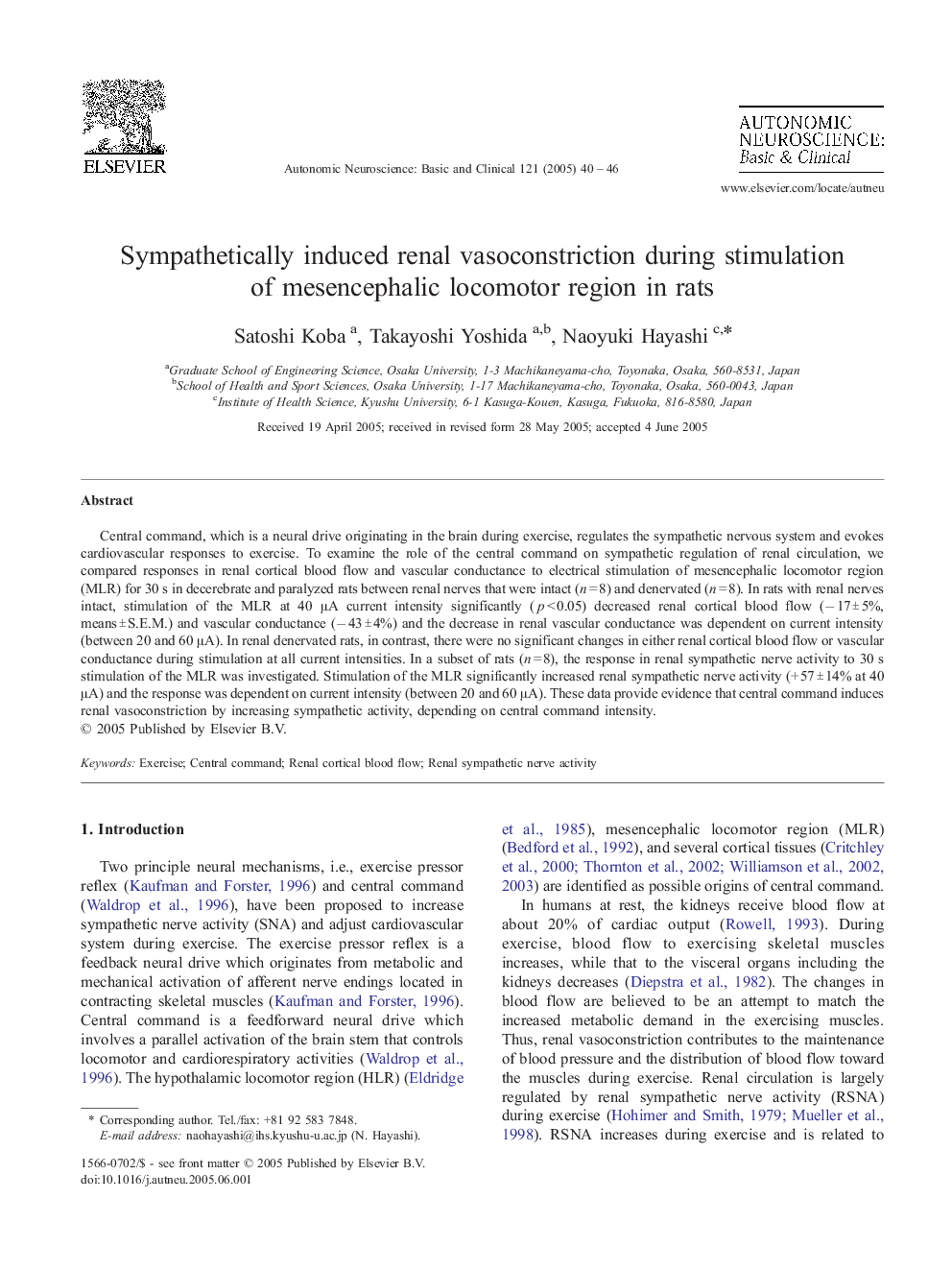| Article ID | Journal | Published Year | Pages | File Type |
|---|---|---|---|---|
| 9186521 | Autonomic Neuroscience | 2005 | 7 Pages |
Abstract
Central command, which is a neural drive originating in the brain during exercise, regulates the sympathetic nervous system and evokes cardiovascular responses to exercise. To examine the role of the central command on sympathetic regulation of renal circulation, we compared responses in renal cortical blood flow and vascular conductance to electrical stimulation of mesencephalic locomotor region (MLR) for 30 s in decerebrate and paralyzed rats between renal nerves that were intact (n = 8) and denervated (n = 8). In rats with renal nerves intact, stimulation of the MLR at 40 μA current intensity significantly (p < 0.05) decreased renal cortical blood flow (â 17 ± 5%, means ± S.E.M.) and vascular conductance (â 43 ± 4%) and the decrease in renal vascular conductance was dependent on current intensity (between 20 and 60 μA). In renal denervated rats, in contrast, there were no significant changes in either renal cortical blood flow or vascular conductance during stimulation at all current intensities. In a subset of rats (n = 8), the response in renal sympathetic nerve activity to 30 s stimulation of the MLR was investigated. Stimulation of the MLR significantly increased renal sympathetic nerve activity (+ 57 ± 14% at 40 μA) and the response was dependent on current intensity (between 20 and 60 μA). These data provide evidence that central command induces renal vasoconstriction by increasing sympathetic activity, depending on central command intensity.
Related Topics
Life Sciences
Neuroscience
Cellular and Molecular Neuroscience
Authors
Satoshi Koba, Takayoshi Yoshida, Naoyuki Hayashi,
